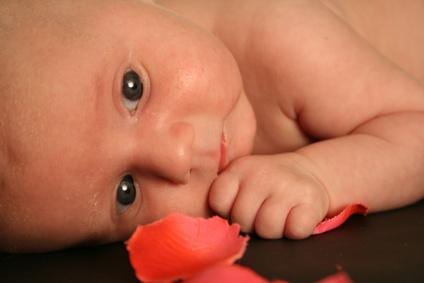A breast lump is an unusual bump, bulge or mound of tissue located anywhere on your breast, extending to the area under your arm. When you breastfeed, it is not unusual to develop a breast lump. Most of the time, breast lumps turn out to be benign, but you should always get this checked by your doctor.
Plugged Milk Duct
When you breastfeed, you could get a lump in your breast caused by a plugged milk duct. Many things can cause a plugged duct, including thicker milk, scar tissue or something pressing on the duct, according to Drugs.com. Blockage of the duct prevents milk from coming out and could cause swelling or a lump that feels tender and is warm to the touch. If you have a lump and your flow of milk stops or decreases, it may be because of a plugged duct.
Steps to Take
If your lump is because of a plugged milk duct, you can apply a warm cloth to your breasts or take a warm shower or bath prior to breastfeeding. This can help remove the blockage. The more frequently you breastfeed or pump, the less likely it is for your ducts to become blocked. If your baby does not empty your breasts at the feeding, you may need to express the milk yourself with a breast pump. You can help prevent plugged ducts by not sleeping face down, by not wearing underwire bras and by not wearing tight clothes.
See Your Doctor
If you discover a lump while you are breastfeeding, see you doctor who can sometimes determine the nature of the lump by the way it feels. Benign lumps are typically round, smooth and move around the breast tissue, according to the La Leche League. Cancerous lumps feel gristlier and do not move as easily. The only way to be certain, however, is to have a mammogram, which you can have while lactating. You might feel more comfortable if you nurse immediately preceding the mammogram, according to the La Leche League.
Cysts
Your lump may also be because of a milk-filled cyst. Fine-needle aspiration can determine if the cyst is benign. If the cyst is fluid filled, it will collapse, meaning it is harmless and benign. If the cyst is a solid mass, it will not collapse. In that case, a biopsy can determine the nature of the cyst. This type of cyst could be because of a calcification, a hardening of tissue, which is also benign. In the case of cysts, 80 percent of the time, they are benign, according to the La Leche League.
Decrease Breast Cancer Risk
The La Leche League recommends steps you can take to decrease your risk of developing breast cancer. Eat a fiber-rich diet that contains fruits and vegetables, breastfeed your baby and exercise. Exercise appears to have a beneficial effect on reducing the risk of breast cancer, but this understanding is only preliminary.





